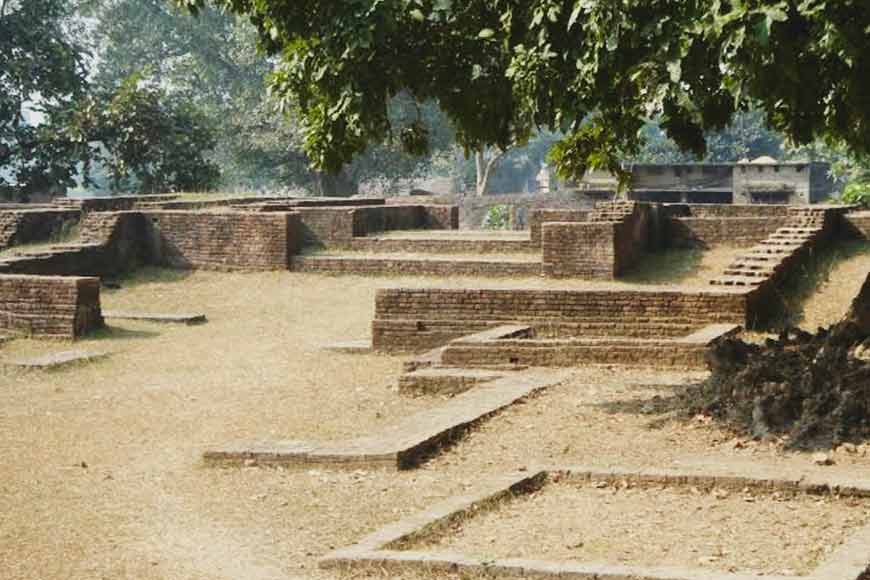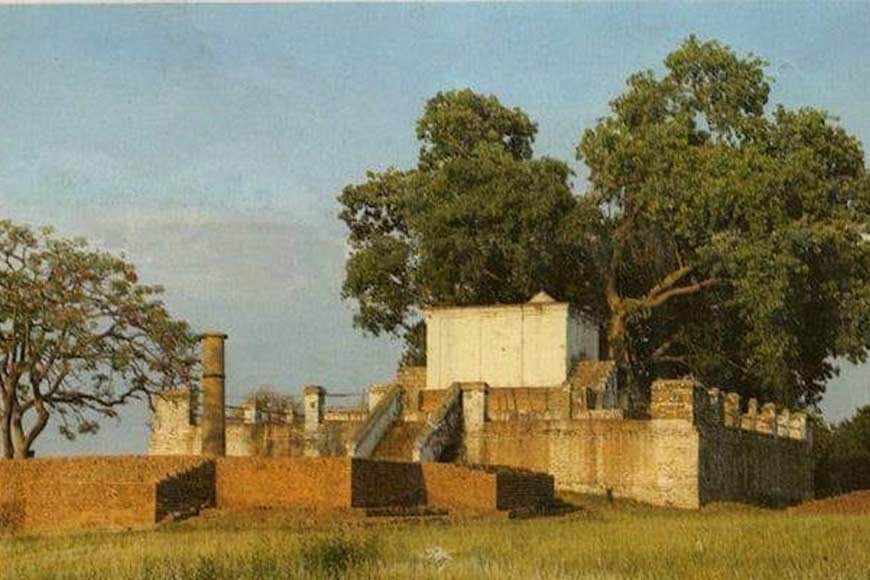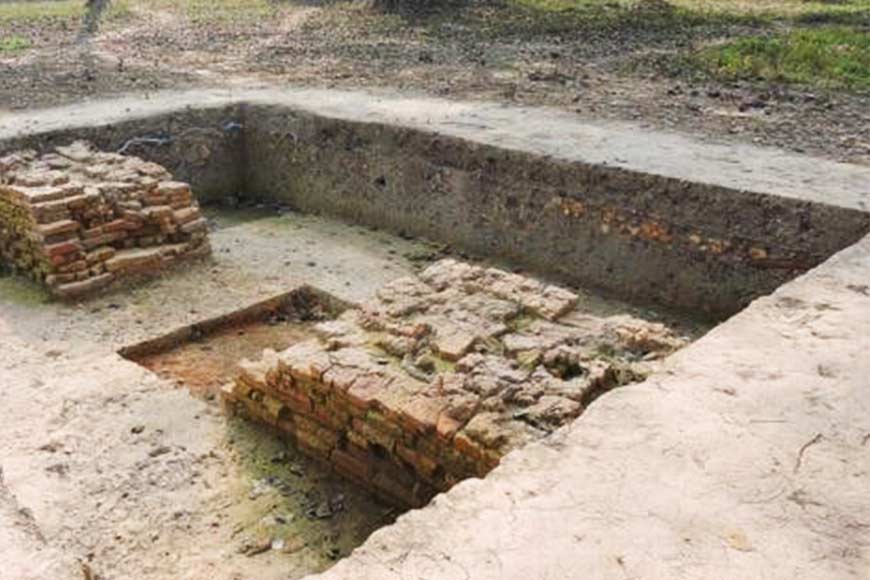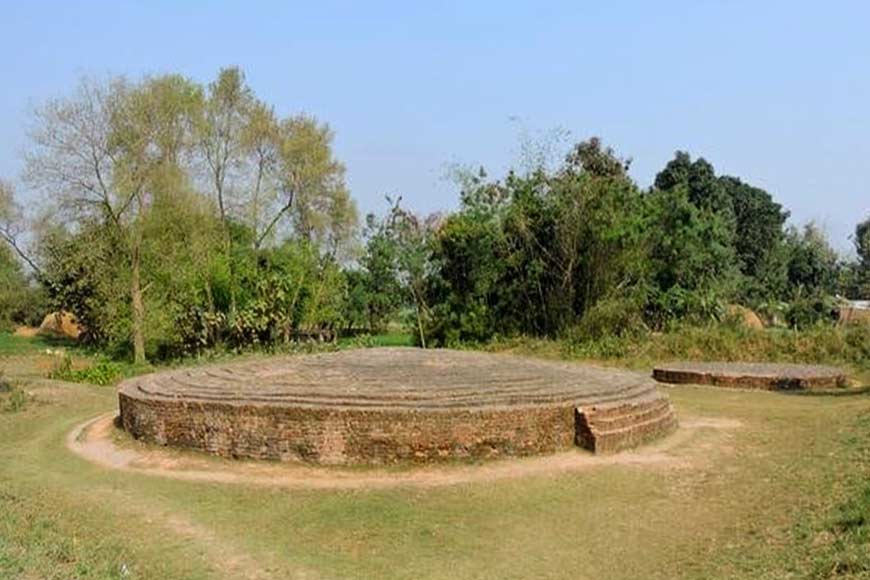P.C. Mukherjee, the Bengali archaeologist who discovered Kapilavastu defeating British counterparts - GetBengal story

He came, he saw and he changed the course of India’s history in the 6th century BC. He was the monarch of Kapilavastu, Shakyasingha. He spent 29 years of his life as Siddartha Gautam before his Mahabinishkramana, when he gave up all worldly pleasures, his wife Yashodhara and son, Rahul in search of the truth and a life of monkhood on the midnight of a full moon through the eastern gateway, also known as the “mahabhinishkramana dwara”.
But where was the ancient city of Kapilavastu located or where was Lumbini, Siddhartha’s birthplace? The quest of identifying the ancient city has been going on for more than a century now. Kapilavastsu refers to the kingdom as well as the administrative centre or the capital of the Shakya dynasty, ruled by King Suddhodhana. But there is confusion about the precise location of Kapilavastu—the city-state his father governed as leader of the Shakya clan.
 Birthplace of Gautama Buddha, Lumbini
Birthplace of Gautama Buddha, Lumbini
Way back in 1870s, British archaeologist Archibald Carllyele discovered the ruins of an ancient city close to Buliya Taal (Buliya reservoir) in the north-west part of Gorakhpur in Uttar Pradesh and believed it to be ancient Kapilavastu. Sir Alexander Cunningham, the founder Director General of Archaeological Survey of India (ASI), supported his claim but other Orientalists concluded the claim to be incorrect. They were searching for the birthplace by taking into account the topographical and geographical hints left by the ancient Chinese travellers, Fa Hien and Hiuen Tsiang. Later, renowned German Indologist and Archaeological Surveyor of the North-Western Provinces and Oudh (NWP&O), Dr Alois Anton Fuhrer insisted that Bulia Tal was definitely not ancient Kapilavastu and before leaving for England he handed over the work to babu Poorna Chandra Mukherjee or P.C. Mukherjee.
Mukherjee made his mark in the annals of history as the man who located the ancient city of Kapilavastu. It is amazing how Mukherjee painstakingly and methodically researched for years to get to the crux of the matter, considering the fact that he did not even have any formal institutional degree to give him the much-needed thrust in his sphere of work. He fought against abject poverty since childhood and had to give up his studies due to lack of funds. He was a prolific author and composed a considerable volume of poems but then had to stall his hobby midway. He started writing an epic and then diverted to compiling the history of Lucknow city. He even learnt to draw for this magnum opus.
 Remains of the golden past at Tilaurakot
Remains of the golden past at Tilaurakot
In 1883, Poorna Chandra joined Archaeological Survey of India (ASI) as an archaeologist. But a majority of his colleagues, mostly whites, could not accept him. So, he had to resign and take up a job in the PWC. However, the short stint in the archaeology department had got Mukherjee hooked to its amazing charm. He began probing the areas close to Lalitpur in Bihar for archaeological findings. In 1897, he again got a call from the ASI. Excavation work had been launched to find the remains of the ancient Pataliputra city. Poorna Chandra was assigned to oversee the excavation and he did find the remains of the ancient city as well! And then?
Poorna Chandra was given his next big project: to excavate and search for Kapilavastu. The entire project was carried out under the supervision of Irish Indologist and art historian, Vincent Arthur Smith. Excavation work started in January 1899 but at every juncture, arch rival Waddell began to interfere and criticize Mukherjee. He even complained to the authorities against Poorna Chandra. The government, however, was supportive of Mukherjee and he was given the green signal to carry on. Waddell, however, did not mend his ways and hindered Mukherjee’s progress at every juncture. But Poorna Chandra dealt with him patiently. As a matter of fact, the Pataliputra project was initially given to Waddell but later it was taken away from him and given to Mukherjee. That was the beginning of animosity that continued for years.
 Stupas at Tilaurakot
Stupas at Tilaurakot
Poorna Chandra was a man with a mission. He realized the European archaeologists had been ignoring Tilaura Kot in Kapilvastu district of Nepal. He had a gut feeling that Kapilavastu was located somewhere in the vicinity of Tilaura Kot. Accordingly, he started excavation work at the site. Meanwhile, Waddell left for Gotihawa with labourers, believing it to be ancient Kapilavastu. Poorna Chandra was confident and worked alone. Later, when Waddell returned empty-handed, he witnessed the ruins of Kapilavastu staring at his face! And this was possible due to the concentrated efforts of Babu Poorna Chandra Mukhopadhyay.










